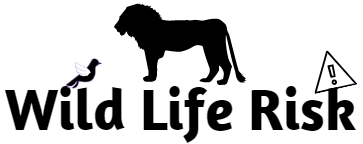The Importance of Environmental Impact Monitoring in Protecting Wildlife Habitats

In a world where human activities continue to shape our planet’s ecosystems, the need to protect and preserve wildlife habitats has never been more critical. The protection of wildlife habitats is particularly important because it can help to ensure the long-term viability of our planet’s biodiversity.
However, as human populations continue to grow and our activities expand into previously untouched areas, it becomes increasingly difficult for conservationists to keep tabs on the effects that these activities have on wildlife habitats.
Enter environmental impact monitoring (EIM), an ongoing process that helps us stay in tune with the health of these habitats and make informed decisions about their conservation. But what exactly is EIM? And how can it help us protect wildlife habitats?
What is environmental impact monitoring?
Let’s think of EIM as a routine check-up for the Earth. Environmental impact monitoring (EIM) is a comprehensive and continuous process designed to observe, analyze, and evaluate the effects of human activities on the environment, with a particular emphasis on wildlife habitats.
It’s all about keeping a close eye on Mother Nature’s pulse to ensure our actions don’t negatively impact the delicate balance of ecosystems.
What is the importance of EIM in wildlife habitat protection?
You may be wondering, “Why do we need to monitor environmental impacts on wildlife habitats?” Well, let’s dive into the reasons that make EIM essential in protecting these precious habitats:
Monitoring gauges habitat health and wellbeing
EIM is crucial in providing a comprehensive understanding of wildlife habitat health. By doing so, it enables us to:
- Detect early warning signs: Like a routine doctor’s visit, EIM can reveal early signs of habitat degradation, allowing us to intervene and prevent irreversible damage.
- Identify critical species: EIM helps us recognize keystone species, which play a vital role in maintaining the stability of ecosystems. By monitoring their health, we can better protect their habitats.
- Track habitat changes over time: Regular EIM allows us to observe trends and shifts in wildlife populations and ecosystems, giving us a clearer picture of how these habitats evolve.
Regular assessments detect potential threats
EIM works as a proactive approach to identify and respond to potential hazards:
- Identify invasive species: EIM can spot invasive species that may outcompete native wildlife, disrupt ecosystems, and cause habitat loss.
- Monitor pollution levels: Regular assessments can track pollution sources and levels, ensuring that we can act promptly to mitigate their impact on wildlife habitats.
- Detect habitat fragmentation: EIM enables us to identify habitat fragmentation caused by urbanization, deforestation, or infrastructure development, allowing us to address these threats effectively.
Evaluation measures restoration effectiveness
Measuring the success of restoration efforts is vital to improving our conservation strategies. EIM helps us:
- Assess recovery progress: EIM tracks the progress of habitat restoration projects, ensuring that they are on the right track and delivering the desired outcomes.
- Identify areas for improvement: By evaluating restoration efforts, EIM highlights areas where we can refine our techniques or implement new strategies to enhance habitat recovery.
- Promote adaptive management: EIM supports an adaptive management approach, encouraging us to learn from our experiences and adjust our actions to achieve better results.
Data informs evidence-based conservation policies
EIM serves as a valuable source of information to guide policy-making:
- Support robust decision-making: EIM provides reliable data that can inform policy decisions, ensuring that conservation policies are grounded in sound evidence.
- Set conservation priorities: Data gathered through EIM helps decision-makers identify high-priority habitats that require urgent protection or restoration efforts.
- Evaluate policy effectiveness: EIM enables us to measure the success of conservation policies, informing necessary adjustments or improvements to achieve desired outcomes.
Monitoring tracks climate change impacts
EIM plays a crucial role in understanding and addressing the effects of climate change on wildlife habitats:
- Identify vulnerable species and habitats: By monitoring the impacts of climate change, EIM can pinpoint species and habitats at higher risk, allowing us to prioritize conservation actions.
- Monitor ecosystem responses: EIM helps us track how ecosystems respond to changes in temperature, precipitation, and other climate-related factors, improving our understanding of ecosystem resilience.
- Inform climate adaptation strategies: With a deeper understanding of climate change impacts on wildlife habitats, EIM supports the development of effective adaptation strategies to protect and conserve these vital ecosystems.
Understanding impacts reduces human-wildlife conflicts
EIM helps minimize the friction between humans and wildlife by:
- Identifying conflict hotspots: EIM can reveal areas where human-wildlife interactions are more frequent, enabling targeted conflict mitigation efforts.
- Guiding land-use planning: By understanding the impacts of human activities on wildlife habitats, EIM can inform sustainable land-use planning that balances development and conservation needs.
- Promoting sustainable practices: EIM encourages the adoption of sustainable practices, such as responsible agriculture and forestry, that minimize negative impacts on wildlife habitats.
Outcomes guide resource allocation priorities
EIM serves as a compass to direct conservation resources effectively:
- Highlight urgent needs: EIM data can spotlight habitats facing immediate threats, enabling conservation organizations to allocate resources where they are needed most.
- Maximize conservation impact: By identifying high-priority habitats and species, EIM helps ensure that limited resources are used to achieve the greatest possible conservation impact.
- Track resource effectiveness: EIM allows us to measure the effectiveness of resource allocation in habitat conservation, informing future resource planning and management.
Sharing results raises public conservation awareness
Disseminating EIM findings helps foster a culture of conservation:
- Educate the public: Sharing EIM results can raise awareness about the importance of wildlife habitat protection and the challenges these habitats face.
- Inspire action: Publicizing EIM outcomes can inspire individuals, communities, and organizations to engage in conservation efforts to save wildlife and adopt more sustainable lifestyles.
- Foster collaboration: By sharing EIM results, we can encourage collaboration among stakeholders, including governments, NGOs, and the private sector, to work together towards habitat conservation goals.
Enhancing habitat connectivity
EIM can help identify opportunities to improve habitat connectivity:
- Detect barriers: EIM can reveal obstacles hindering wildlife movement, such as roads, fences, or urban development, and inform solutions to mitigate these barriers.
- Guide landscape planning: By understanding habitat connectivity, EIM can support the development of wildlife corridors and green infrastructure that facilitate species movement and dispersal.
- Promote habitat resilience: Improved habitat connectivity can enhance the resilience of ecosystems by allowing species to access new resources, adapt to changing conditions, and maintain genetic diversity.
Supporting biodiversity conservation
EIM is a vital tool for conserving the rich tapestry of life on Earth:
- Monitor biodiversity trends: Regular assessments can track trends in species populations and distributions, allowing us to detect declines and take action to protect biodiversity.
- Identify conservation priorities: EIM can help prioritize areas and species in need of urgent conservation efforts, ensuring that resources are allocated effectively.
- Evaluate conservation success: By measuring changes in biodiversity over time, EIM allows us to assess the effectiveness of conservation initiatives, informing necessary adjustments or improvements to achieve desired outcomes.
Final Thoughts
Environmental impact monitoring is an essential tool in our quest to safeguard the Earth’s ecosystems and preserve the diverse array of species that call them home.
By acting as a holistic health assessment for our planet, EIM enables us to make well-informed decisions and adopt proactive measures to mitigate negative impacts, shelter vulnerable species, and maintain the intricate harmony of wildlife habitats.
As we continue to face unprecedented environmental challenges, embracing EIM’s vital role in conservation efforts will be crucial for securing a sustainable future not only for wildlife but also for the generations of humans to come.
Read more: Wild Animals And Coronavirus Pandemic







